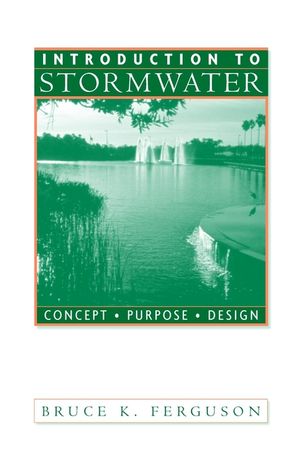Introduction to Stormwater: Concept, Purpose, DesignISBN: 978-0-471-16528-6
Hardcover
272 pages
February 1998
 This is a Print-on-Demand title. It will be printed specifically to fill your order. Please allow an additional 10-15 days delivery time. The book is not returnable.
|
||||||
This professional reference tool combines basic concepts ofhydrology with the latest applications for landscape architectureand site engineering--including effective, eco-friendly, andpeople-friendly design methods for:
* Wetlands construction
* Groundwater recharge
* Infiltration
* Porous pavements
* Stream restoration
* Water harvesting
Stormwater management is an essential component of all landscapearchitecture and site engineering projects. Introduction toStormwater helps solve environmental problems that arise in theprocess of planning, implementing, and evaluating the builtenvironment.
This useful guide is of singular importance to landscapearchitects, civil engineers, architects, wetlands scientists, andother environmental professionals who must comply withever-changing government regulations. Concepts such as drainage,runoff quality, and drought control are presented in aneasy-to-learn, nontechnical format, using case studies drawn fromall regions of the United States. Over 200 charts, tables,photographs, and examples aid in conceptualization andcalculations. Each chapter contains exercises to ensure that theuser acquires applied skills essential to professional licensureexams and practice in the field, as well as information on relatedsoftware.
* Wetlands construction
* Groundwater recharge
* Infiltration
* Porous pavements
* Stream restoration
* Water harvesting
Stormwater management is an essential component of all landscapearchitecture and site engineering projects. Introduction toStormwater helps solve environmental problems that arise in theprocess of planning, implementing, and evaluating the builtenvironment.
This useful guide is of singular importance to landscapearchitects, civil engineers, architects, wetlands scientists, andother environmental professionals who must comply withever-changing government regulations. Concepts such as drainage,runoff quality, and drought control are presented in aneasy-to-learn, nontechnical format, using case studies drawn fromall regions of the United States. Over 200 charts, tables,photographs, and examples aid in conceptualization andcalculations. Each chapter contains exercises to ensure that theuser acquires applied skills essential to professional licensureexams and practice in the field, as well as information on relatedsoftware.



